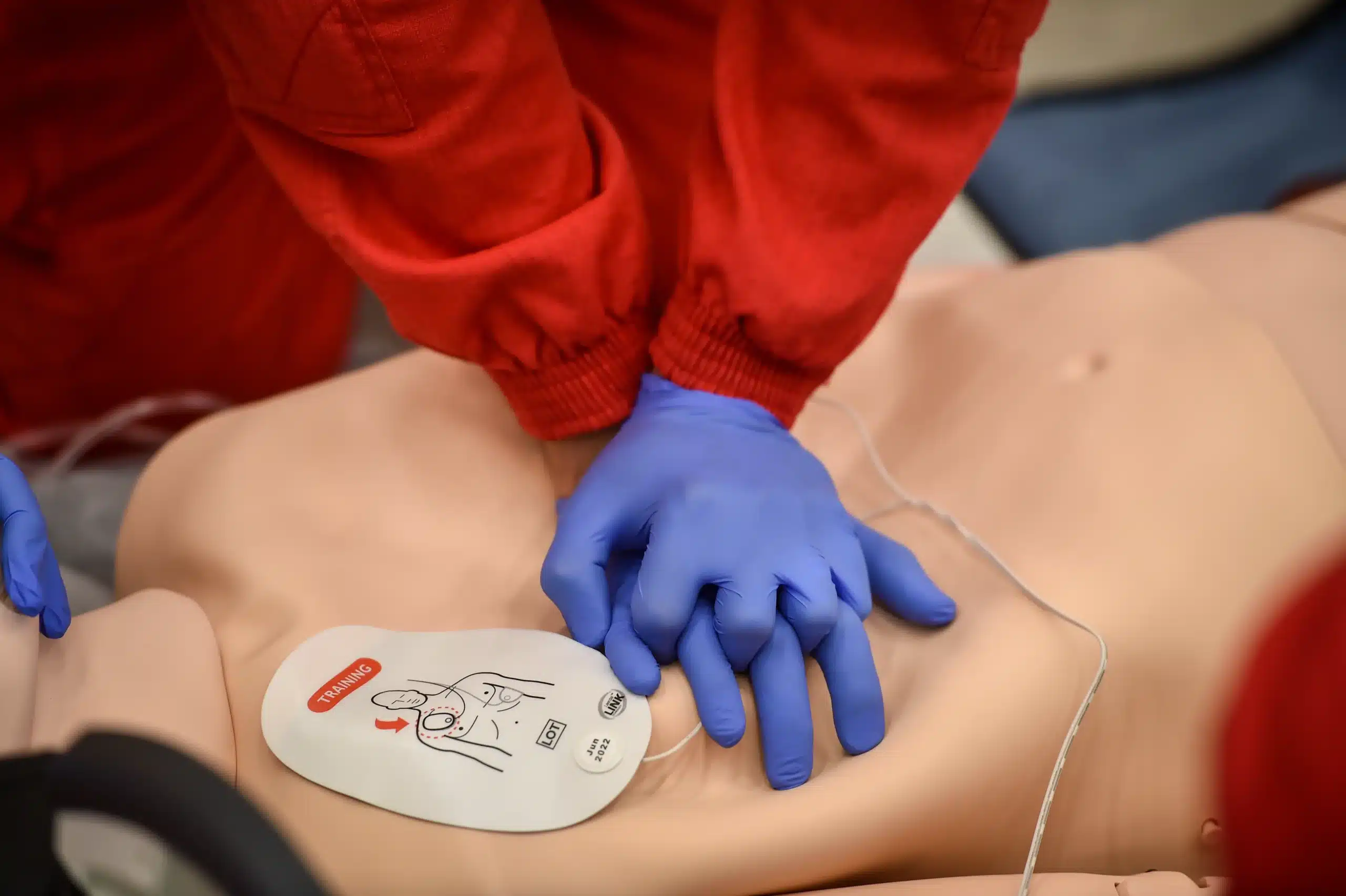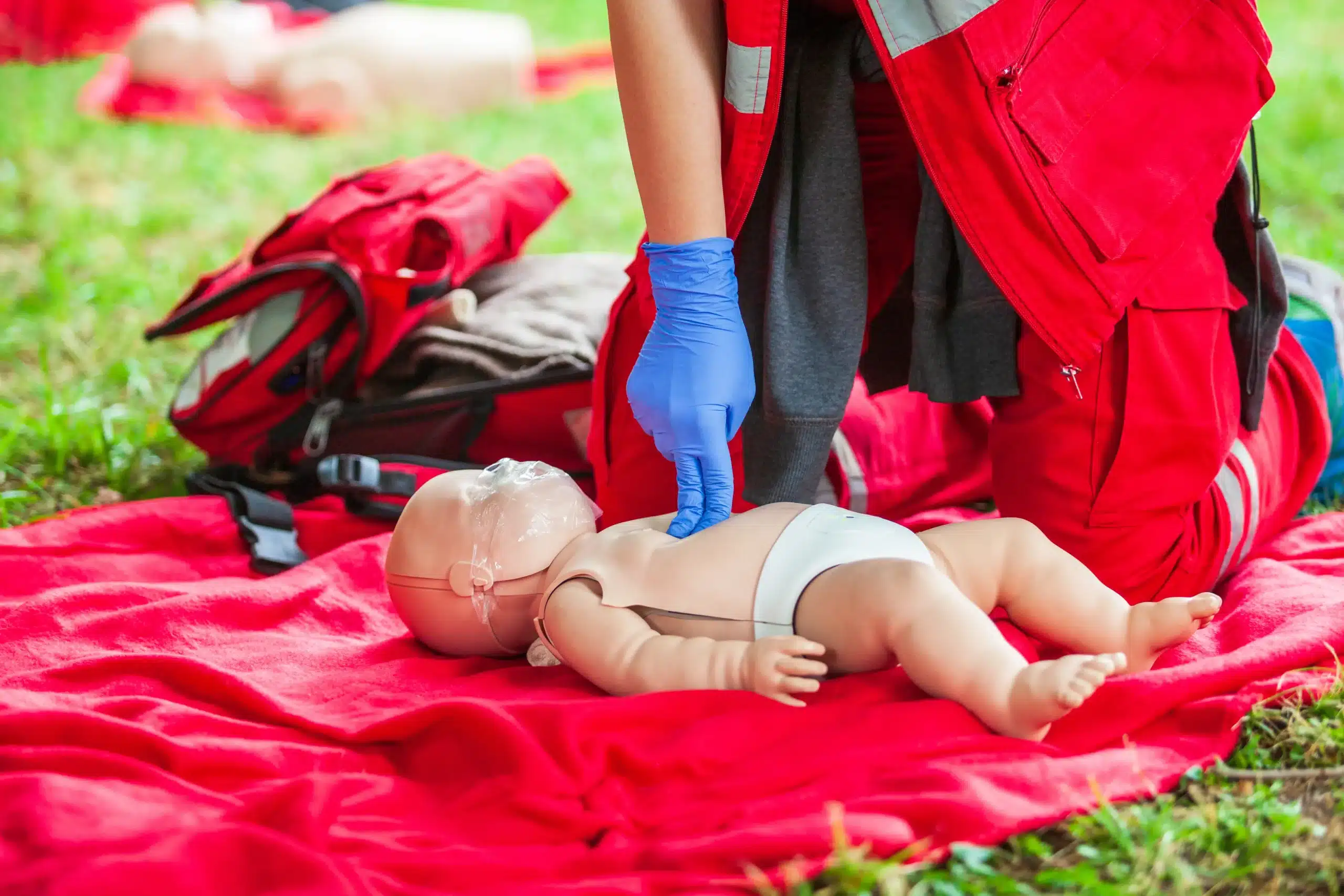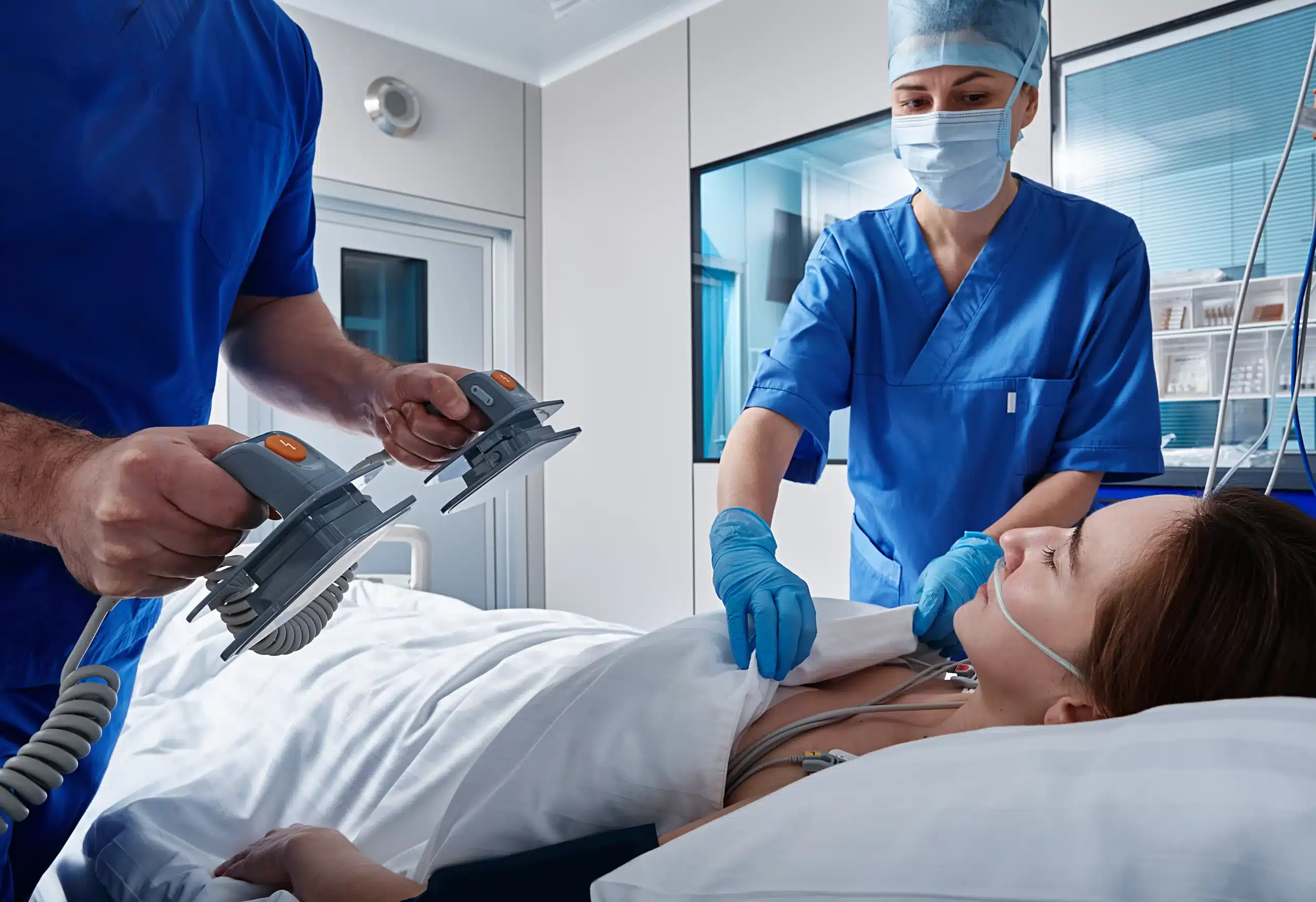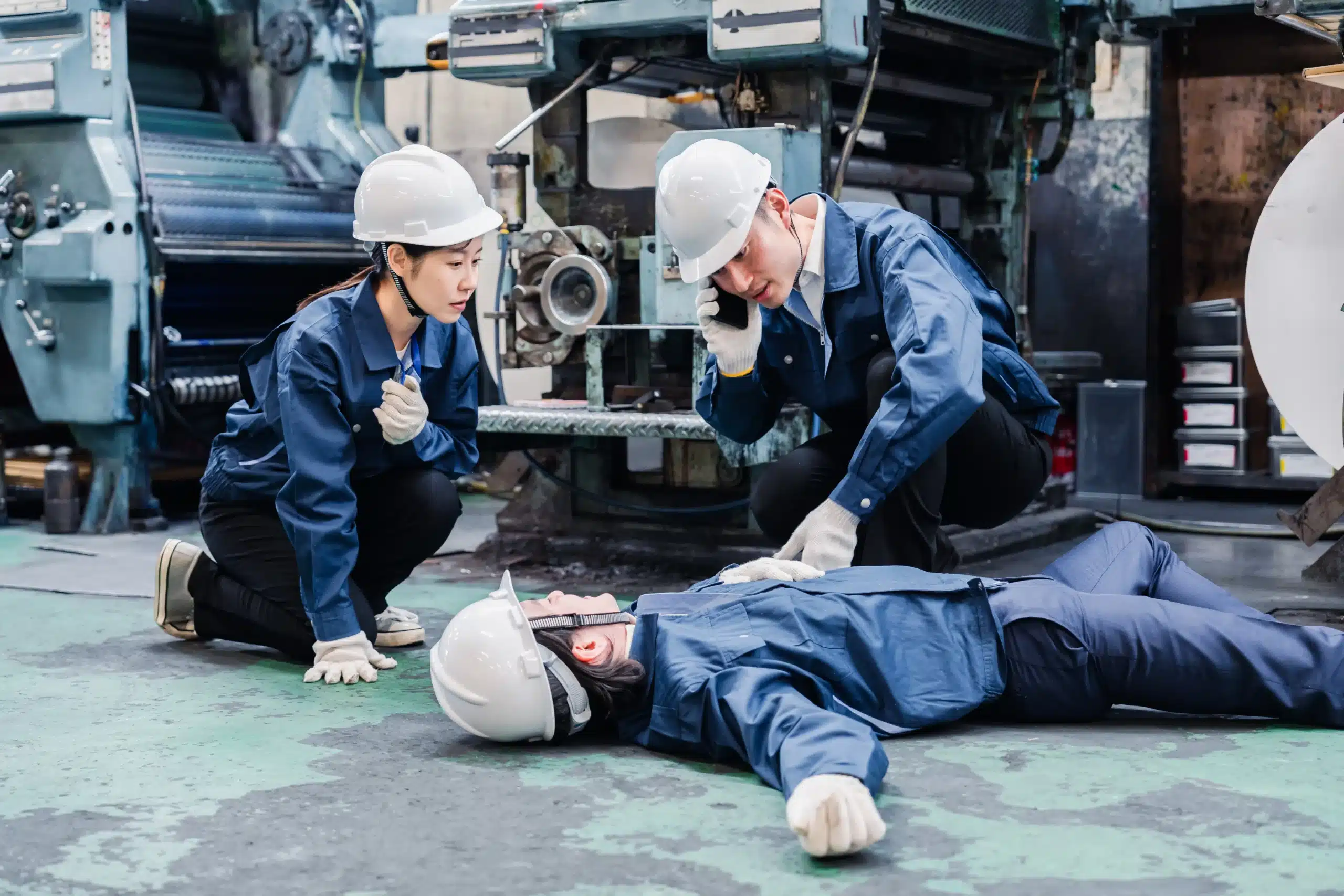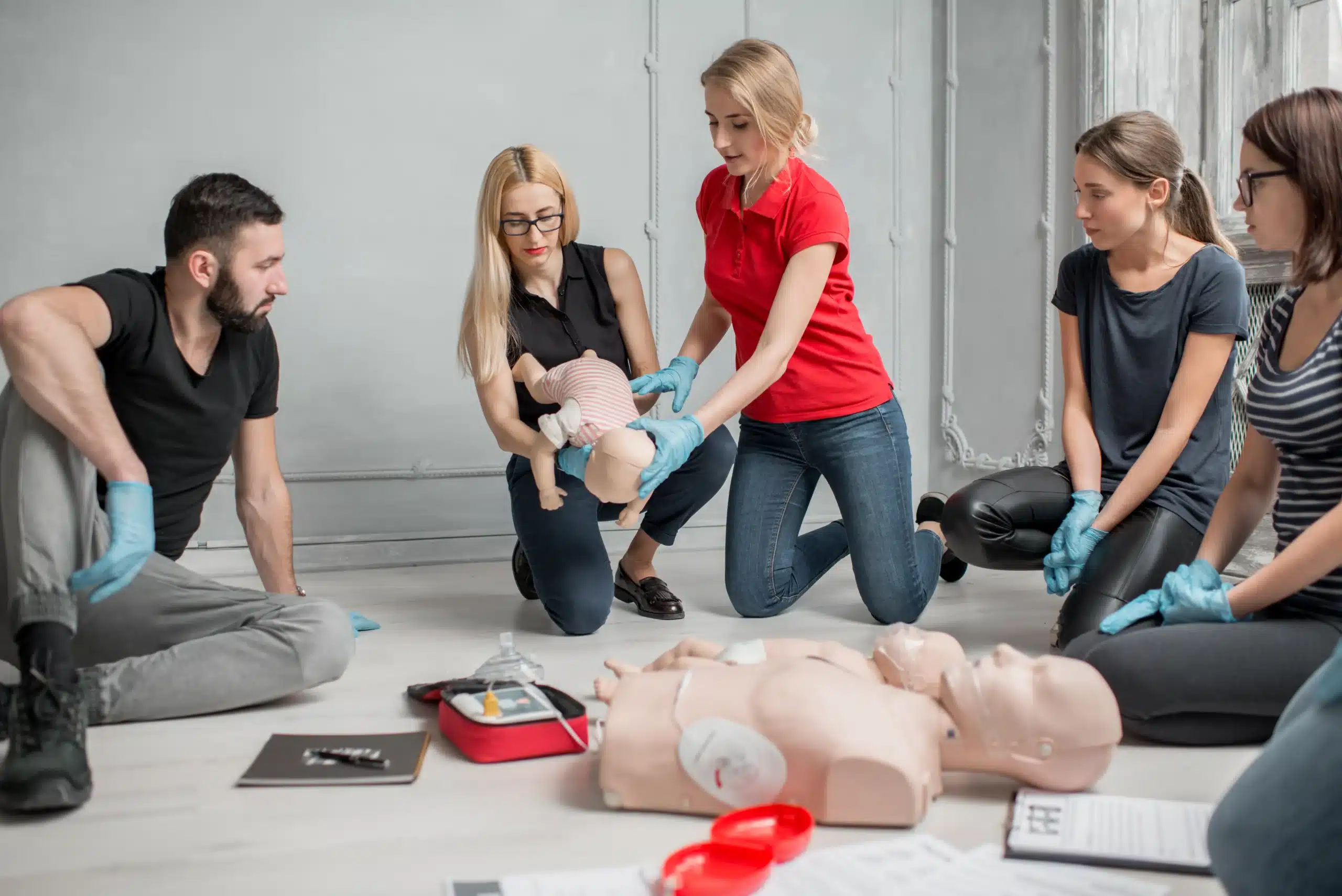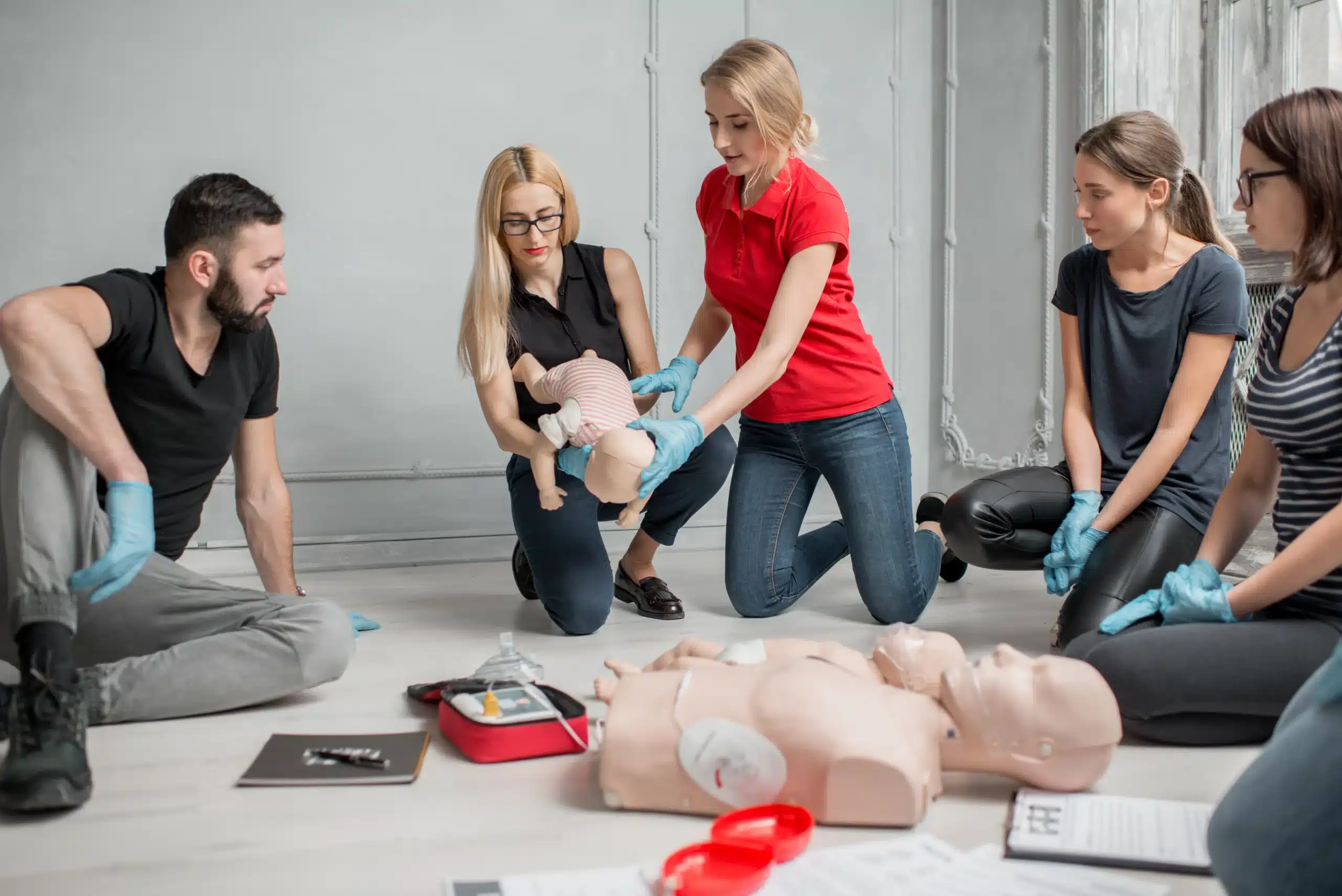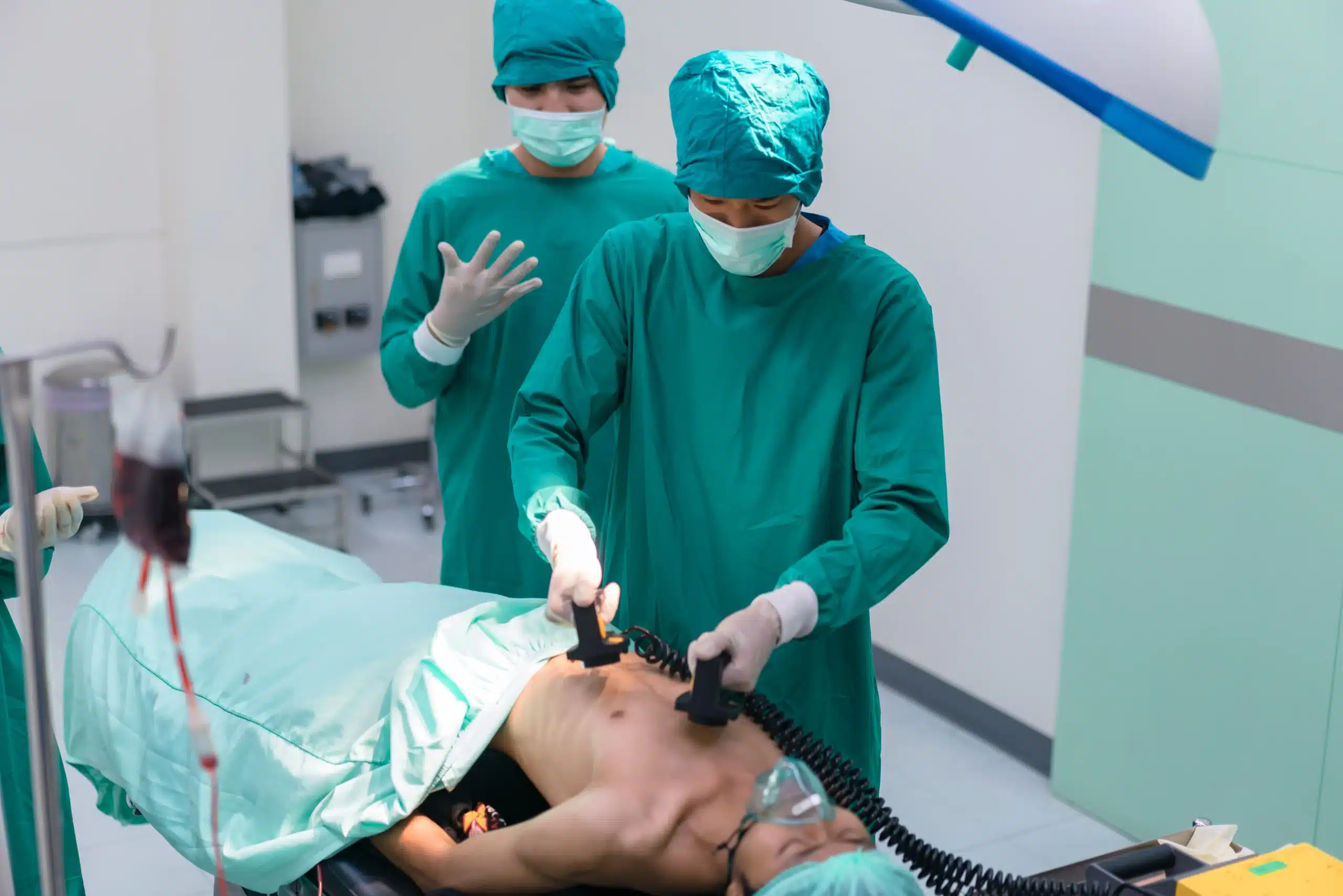Life in Santa Clara is vibrant and active, but accidents happen. A slip on a hiking trail, a burn in the kitchen, or a sudden medical emergency can occur when you least expect it. Being prepared isn’t about living in fear; it’s about having the confidence to respond effectively. This guide explores the world of first-aid in Santa Clara, offering insights into various training options, certification costs, and the essential skills you’ll gain to handle everyday mishaps and more serious medical situations.
Key Takeaways
- First-aid training prepares you for emergencies: Equipping yourself with these skills allows you to confidently handle various medical situations, from minor injuries to life-threatening events.
- Select the right certification: Understand the differences between certifications like BLS and standard first aid. Choose the one that aligns with your personal or professional needs.
- Stay up-to-date: Keep your skills sharp through continuing education and practice. Renew your certification promptly to maintain your qualifications and provide effective care.
What is First-Aid Training in Santa Clara?
First-aid training gives you the skills to handle medical emergencies until professional help arrives. Think of it as your toolkit for responding to everything from minor cuts and burns to more serious situations like choking or sudden cardiac arrest. These courses teach you how to assess the scene, provide initial care, and potentially save a life. In Santa Clara, you can find a variety of first-aid courses, including those combined with CPR training, offered by organizations like the American Heart Association. After completing a certified course, you’ll receive a certification card, typically valid for two years, demonstrating your readiness to respond. This training is invaluable, whether you’re a healthcare professional, a teacher, a parent, or simply someone who wants to be prepared. Safety Training Seminars offers these essential courses locally.
First-Aid Course Types
Choosing the right first-aid course depends on your specific needs and goals. Here’s a breakdown of common first-aid and CPR certifications offered in Santa Clara:
CPR Certification
CPR certification teaches you how to recognize and respond to cardiac arrest and other breathing emergencies. You’ll learn chest compressions, rescue breaths, and how to use an automated external defibrillator (AED). CPR training is essential for healthcare providers, but it’s also a valuable skill for anyone who wants to be prepared for an emergency. Milpitas CPR Classes offers American Heart Association (AHA) certified CPR training, ensuring you receive high-quality instruction.
Basic Life Support (BLS)
BLS certification goes beyond basic CPR. Designed for healthcare professionals and first responders, it includes training on team-based resuscitation, advanced airway management, and the use of specialized equipment. The BLS course covers essential techniques and best practices for healthcare settings. If you’re pursuing a career in healthcare, BLS certification is often a requirement.
Advanced Cardiovascular Life Support (ACLS)
ACLS certification is for experienced healthcare professionals who manage cardiovascular emergencies. This advanced course covers topics like ECG interpretation, pharmacology, and team dynamics during resuscitation. ACLS training provides you with the skills to handle complex medical situations confidently.
Pediatric Advanced Life Support (PALS)
PALS certification focuses on the specialized needs of infants and children during medical emergencies. The course covers pediatric assessment, airway management, and resuscitation techniques. PALS certification is crucial for healthcare providers working with young patients. Safety Training Seminars, a woman-owned AHA Training Center affiliated with Milpitas CPR Classes, offers this important certification.
Standard First Aid
A standard first-aid course teaches you how to respond to a wide range of common injuries and illnesses, from cuts and burns to sprains and allergic reactions. You’ll learn basic wound care, how to control bleeding, and how to recognize the signs of a medical emergency. First-aid training is beneficial for everyone, regardless of profession.
Top Santa Clara First-Aid Training Providers
Finding the right first-aid training can feel overwhelming with so many options. To help, we’ve compiled a list of reputable providers in and around Santa Clara. Remember to verify certification and accreditation before registering for a course.
Milpitas CPR Classes
Milpitas CPR Classes offers American Heart Association (AHA) certification courses, including BLS, ACLS, PALS, and First Aid. Conveniently located at 1772 Clear Lake Ave, Suite 200, Milpitas, CA 95035, they offer classes daily from 8 am to 10 pm, catering to busy schedules. This makes them a practical choice for residents of Milpitas, San Jose, and Santa Clara. They provide official AHA certification cards upon course completion.
Safety Training Seminars
Safety Training Seminars is a woman-owned AHA Training Center providing a range of AHA courses, including BLS, ACLS, PALS, CPR, and First Aid. They offer classes seven days a week in Santa Clara and surrounding areas, prioritizing customer convenience and comprehensive training. This training center also offers the RQI program for healthcare professionals seeking to maintain their resuscitation skills.
First Support CPR and First Aid Training
First Support CPR and First Aid Training is another provider listed among the top first-aid and CPR class options in Santa Clara, according to online reviews. Check their website or contact them directly for more information on their course offerings and schedules.
HeartReady
HeartReady also appears on lists of best CPR classes in Santa Clara. While online reviews can offer helpful insights, it’s always a good idea to research providers thoroughly and compare what they offer before signing up.
Response LifeSafety
Response LifeSafety is another option for first-aid training in Santa Clara. Look into their specific courses and certifications to see if they align with your needs.
Santa Clara County Fire Department
While the Santa Clara County Fire Department offers CPR and AED training, they do not provide Healthcare Provider/BLS CPR or First Aid training. This is important to note if you need these specific certifications.
American Red Cross
While Safety Training Seminars and Milpitas CPR Classes focus on AHA certifications, the American Red Cross is another nationally recognized organization offering first-aid and CPR training. Check their website for courses available in your area.
Costs, Registration, and Financial Aid
Knowing the price range for CPR and first-aid certification helps you budget for your training. This section breaks down typical costs, explores some budget-friendly choices, and explains how to register.
Typical Certification Costs
CPR and first-aid training costs vary depending on the course type and provider. Basic CPR courses covering AED use can start around $35 per person, according to CPR1. More advanced certifications like BLS, ACLS, and PALS typically have higher costs. Browse sites like Thumbtack to compare prices and training options in your local area.
Free & Low-Cost Options
While free certification is uncommon, some options exist for affordable training. Joining your local Community Emergency Response Team (CERT) may provide free or low-cost CPR and first-aid training as part of their program. This is a valuable way to develop essential skills while contributing to your community.
Registering for a Course
Registering for a course is typically simple. Many providers, including Safety Training Seminars, allow students to register online. Class schedules often accommodate various needs, with choices for weekday or weekend sessions. Check with your chosen provider for their specific registration process.
Group Discounts for Businesses
Businesses training multiple employees should inquire about group discounts. Some providers offer reduced rates for groups. For example, training services listed on Thumbtack sometimes offer group training for approximately $280 for eight or more participants. This can be a cost-effective way to provide essential lifesaving skills for your team.
Select the Right First-Aid Certification
Choosing the right first-aid certification depends on your individual needs and career goals. This section clarifies the differences between common certifications like Basic Life Support (BLS) and Standard First Aid, discusses industry requirements, and explains the importance of certification renewal.
BLS vs. First Aid
Basic Life Support (BLS) and First Aid certifications are often confused, but they address different situations. BLS training focuses on life-threatening cardiac emergencies like heart attacks and strokes. You’ll learn how to perform CPR, use an AED, and deliver other critical interventions. First Aid training covers a broader range of injuries and illnesses, from minor cuts and burns to more serious problems like choking and allergic reactions. Think of BLS as specialized for cardiac crises, while First Aid offers a wider skill set for various emergencies. BLS certification typically involves a hands-on CPR skills test, while First Aid focuses more on understanding treatment procedures. BLS is frequently required for healthcare providers, while First Aid certification is helpful for anyone. If you’re considering a career in healthcare, our BLS certification course might be a good fit. We also offer comprehensive CPR and First Aid training for those who want to be prepared for any situation.
Industry Requirements
Many professions require specific certifications. Healthcare professionals, lifeguards, and teachers, for instance, often need BLS certification. Check with your employer or professional organization to learn which certifications are necessary for your field. Our training center, Safety Training Seminars, offers AHA-approved certifications in CPR, BLS, ACLS, PALS, and First Aid. With classes available in over 60 Northern California cities, finding a course near you is easy. Our flexible schedule, with classes offered daily from 8 am to 10 pm, accommodates even the busiest schedules.
Certification Renewal
First Aid and CPR certifications typically expire every two years. This ensures your skills and knowledge remain aligned with the latest guidelines. After completing our CPR and First Aid certification course, you’ll receive a certification card valid for two years. Make sure to renew your certification before it expires to maintain your qualifications and demonstrate your commitment to providing effective first aid care. We offer renewal courses to help you easily stay current.
Common First-Aid Emergencies
Knowing how to handle common first-aid emergencies can make a real difference. This section covers basic first-aid procedures, but remember, a certification course provides more in-depth training and hands-on practice. Consider getting certified in first aid and CPR to feel truly prepared. We offer several first-aid and CPR courses in Milpitas, serving the broader San Jose and Santa Clara areas.
Cuts and Scrapes
Minor cuts and scrapes happen all the time. First, clean the wound thoroughly with mild soap and water. Apply direct pressure to stop any bleeding, and then cover the wound with a clean bandage. For deeper cuts or heavy bleeding, seek medical attention.
Burns
Burns range from mild sunburns to severe thermal burns. For minor burns, cool the affected area with cool (not icy) water for 10–15 minutes. Don’t apply ice directly to the burn. Cover loosely with a sterile bandage. If the burn is severe, blisters excessively, or covers a large area, get immediate medical help. For sunburns, wearing protective clothing or staying indoors helps.
Sprains and Strains
Sprains and strains involve injuries to ligaments and muscles/tendons. The RICE method—Rest, Ice, Compression, and Elevation—is often recommended. Rest the injured area, apply ice packs for 20 minutes at a time (with breaks), compress the area with a bandage, and elevate it above heart level. Over-the-counter pain relievers can help manage discomfort. If the pain is severe or you suspect a fracture, see a doctor. Learn more about sprains and how to treat them from the Mayo Clinic.
Heat Exhaustion and Heat Stroke
Heat exhaustion can become heat stroke, a life-threatening condition. Recognize the signs of heat exhaustion: heavy sweating, dizziness, headache, nausea, and weakness. If someone experiences these symptoms, move them to a cool place, loosen clothing, and offer cool water. If symptoms worsen or they show signs of heat stroke (confusion, seizures, loss of consciousness), call 911 immediately.
Cardiac Arrest (CPR)
Cardiac arrest requires immediate intervention with CPR. If you see someone collapse, call 911 and begin CPR if you’re trained. CPR training teaches the proper technique for chest compressions and rescue breaths. Early intervention can significantly improve survival rates. Our classes cover CPR certification through the American Heart Association.
Choking
If someone is choking, encourage them to cough forcefully. If they can’t cough or speak, perform the Heimlich maneuver. This involves standing behind the person, wrapping your arms around their waist, and making quick, upward thrusts into their abdomen. If they become unconscious, begin CPR.
Allergic Reactions
Allergic reactions can range from mild itching to life-threatening anaphylaxis. If someone experiences a severe allergic reaction (difficulty breathing, swelling of the face or throat, dizziness), administer an epinephrine auto-injector (like an EpiPen) if available and call 911 immediately.
First-Aid Training by Group
Knowing which first-aid and CPR certifications you need depends on your profession and workplace requirements. This section clarifies training recommendations for different groups.
Healthcare Professionals
Healthcare providers, including doctors, nurses, EMTs, and medical assistants, require comprehensive training to handle various medical emergencies. BLS certification from the American Heart Association is often a minimum requirement, covering CPR, AED use, and basic airway management. Many healthcare settings also require ACLS (Advanced Cardiovascular Life Support) and PALS (Pediatric Advanced Life Support) certifications to manage more complex cardiac and respiratory emergencies. The RQI program offers a flexible and convenient way to maintain these certifications through ongoing skills practice and verification. Taking these courses through Safety Training Seminars ensures high-quality instruction based on the latest AHA guidelines.
Educators and Childcare Providers
Teachers, daycare providers, and other childcare professionals play a vital role in children’s safety. CPR and first-aid certifications are essential for these roles, enabling quick responses to common childhood injuries and emergencies like choking, allergic reactions, and minor wounds. CPR and first-aid training through a reputable provider like Safety Training Seminars equips educators with the skills to create a safe and healthy learning environment. These courses, offered by the woman-owned AHA Training Center, cover age-specific first-aid techniques and emergency procedures relevant to childcare settings.
Workplace First Responders
While not all workplace employees need advanced medical certifications, having a team of trained first-aid responders is crucial for any business. Designated first-aid responders can provide immediate care until professional medical help arrives. First-aid training provides employees with the skills to handle common workplace incidents, such as cuts, burns, sprains, and other injuries. This training also covers essential life-saving techniques like CPR, giving employees the confidence to respond effectively in emergencies. Obtaining a two-year certification from a recognized organization like the American Heart Association ensures your team’s training meets industry standards.
Maintain Your First-Aid Skills
Knowing first aid is like having a superpower—it can make a real difference in someone’s life. But just like any superpower, your first-aid skills can get rusty if you don’t keep them sharp. This section covers how to stay up-to-date and ready for anything.
Renew Your Certification
CPR and first-aid certifications typically expire every two years. Check your current certification card for the expiration date. Renewing a few months early is always a smart move, so you avoid any gaps in your qualifications. Resources like Elite Medical Training offer helpful information on the differences between various certifications, such as BLS and standard first aid. This information can help you choose the right course for your recertification. Staying current with your certifications shows your commitment to providing effective care and ensures you’re prepared for emergencies.
Continuing Education
Even if your certification isn’t up for renewal yet, ongoing learning is important. It’s similar to staying informed about the latest traffic laws—guidelines and best practices in first aid can change, and continuing education keeps your knowledge current. ACLS Now highlights the importance of having a plan during emergencies. Knowing what to do in different situations, from minor cuts to more serious events, helps you stay calm and respond effectively. Look for ways to expand your knowledge through workshops, online resources, or refresher courses.
Practice and Refresher Tips
Regular practice is key to maintaining your skills and confidence in first aid. It’s like playing a musical instrument—the more you practice, the better you perform. Simple exercises, like regularly taking someone’s pulse, can make a big difference in a real emergency. Emergency Prep Guy offers practical advice for handling common emergencies. Even basic skills, like knowing how to treat a burn, as highlighted by ACKO, are crucial for providing immediate care. Try creating scenarios with friends or family to practice your skills in a relaxed setting. This will help you react quickly and efficiently when it matters most.
Why First-Aid Training Matters in Santa Clara
Knowing first aid is empowering. It equips you with the skills to confidently handle medical emergencies, whether at home, work, or out and about in Santa Clara. But the benefits extend beyond personal preparedness—it’s about building a safer, more resilient community.
Benefits for You and Your Community
First-aid training empowers you to respond effectively to a wide range of medical situations. Milpitas CPR Classes offers comprehensive courses covering everything from minor injuries like cuts and scrapes to life-threatening emergencies like cardiac arrest. These skills not only allow you to provide immediate assistance but also bridge the gap until professional medical help arrives, which can significantly improve outcomes, especially in time-sensitive situations. You could be the person who saves a life.
Beyond the individual level, first-aid training strengthens the entire Santa Clara community. When more people are trained, it creates a network of prepared individuals ready to assist in times of need. The American Heart Association emphasizes accessible training for everyone, from healthcare providers to community members. This widespread knowledge fosters a culture of safety and support, making Santa Clara a more secure place for everyone.
Local Safety Statistics
While we all hope never to face an emergency, being realistic about potential risks is important. Understanding common emergencies in Santa Clara underscores the value of first-aid training. Knowing how to check a pulse, treat burns, or manage allergic reactions—essential skills covered in basic first-aid training—can make all the difference.
Common emergencies like burns, CPR situations, and allergic reactions highlight the need for preparedness within our community. Being equipped to handle these situations can significantly impact the health and safety of our neighbors, friends, and family. By investing in first-aid training, you’re not just gaining personal skills; you’re contributing to a more resilient and prepared Santa Clara.
Related Articles
- CPR Training in Santa Clara: A Complete Guide – Milpitas CPR Classes
- American Red Cross Santa Clara: A Guide to Services – Milpitas CPR Classes
- ACLS Courses in Santa Clara: The Complete Guide – Milpitas CPR Classes
- BLS Certification in Santa Clara: Your Full Guide – Milpitas CPR Classes
- PALS HeartCode Santa Clara: Your Certification Guide – Milpitas CPR Classes
Frequently Asked Questions
What’s the difference between CPR and First Aid training?
CPR focuses specifically on life-threatening breathing and cardiac emergencies, teaching you how to perform chest compressions, rescue breaths, and use an AED. First Aid covers a broader range of injuries and illnesses, from minor cuts and burns to more serious situations like choking or allergic reactions. Often, you can take these courses together.
How much does CPR and First Aid certification cost in Santa Clara?
Costs vary depending on the provider and the type of certification. Basic CPR/AED courses can start around $35, while more advanced certifications like BLS, ACLS, and PALS are more expensive. Check with various training providers in Santa Clara for their specific pricing. Look for group discounts if you’re coordinating training for a business or group of people.
Which CPR and First Aid certification is right for me?
The best certification depends on your job and personal goals. Healthcare providers typically need BLS, ACLS, and sometimes PALS. If you work with children, CPR and basic First Aid are good choices. If you simply want to be prepared for emergencies at home or in your community, a combined CPR/First Aid course is a great option.
How do I find a reputable first-aid training provider in Santa Clara?
Look for providers offering certifications from nationally recognized organizations like the American Heart Association or the American Red Cross. Check online reviews and compare course content, schedules, and costs to find the best fit for your needs. Make sure the provider is conveniently located and offers classes that fit your schedule.
How often do I need to renew my first-aid and CPR certification?
Most certifications are valid for two years. It’s a good idea to renew a few months before your certification expires to ensure you’re always prepared for an emergency. Many providers offer renewal courses to make this process easy.
